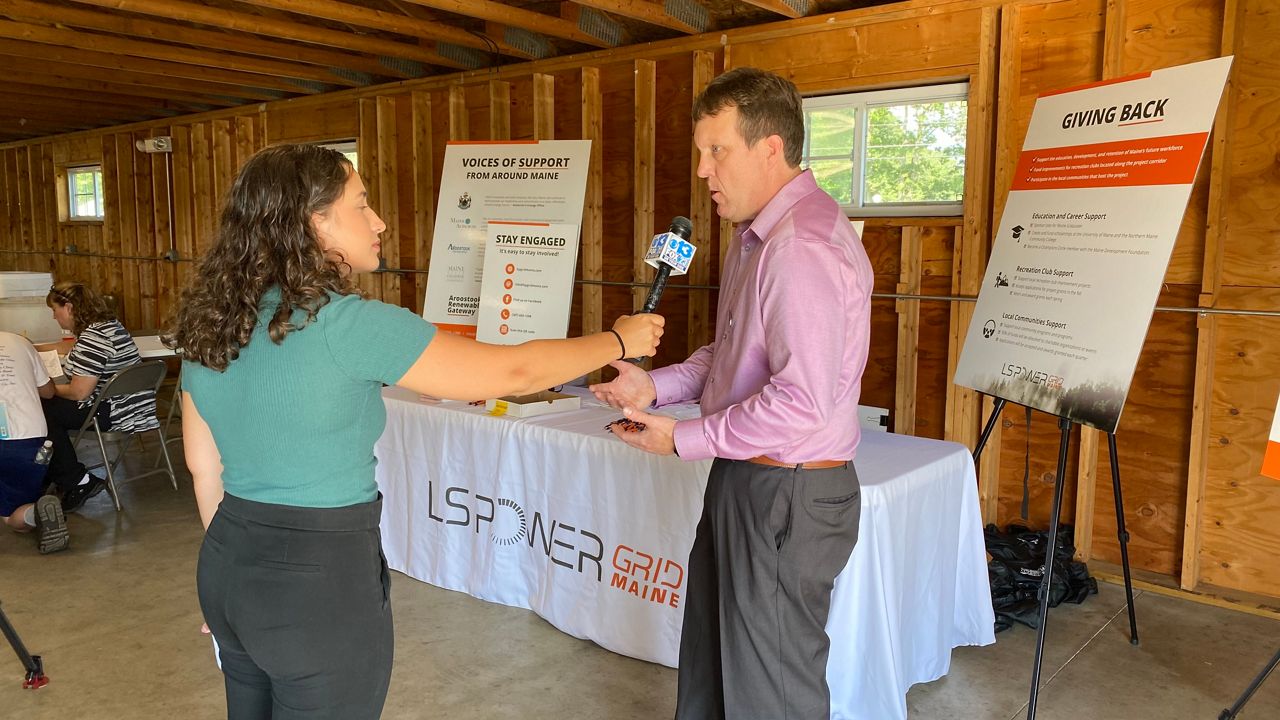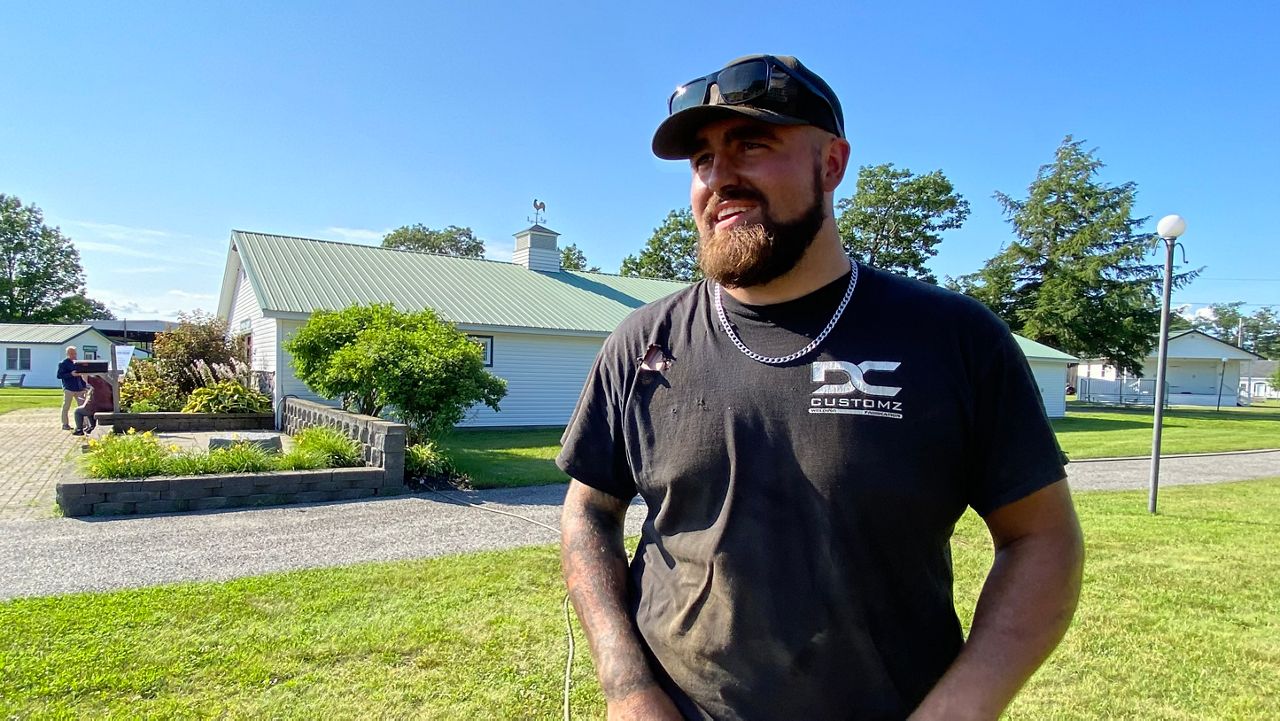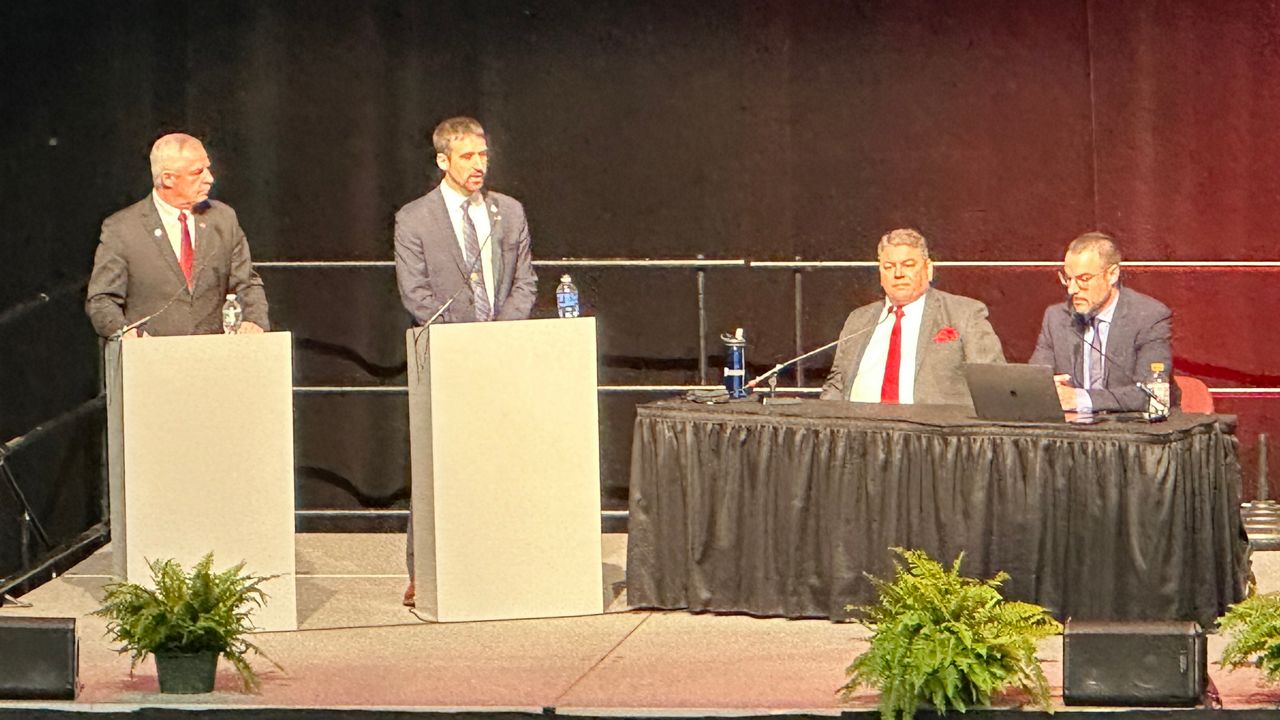Jeffrey and Margaret Dyer own 83 acres in Palermo and on a clear day, they can see Mount Washington in the distance.
The land has been in Jeffrey’s family for 150 years and they someday hope to give their four children parcels if they decide to raise their families in Waldo County too.
But on Thursday, the Dyers stood outside the Commercial Exhibits building at the Windsor Fairgrounds holding a piece of paper that shows a proposed new power line could run right through the middle of their land.
“We got married there,” Margaret Dyer said. “It’s the best view in central Maine.”
The Dyers were two of many who came to the fairgrounds to listen to officials with LS Power Grid Maine, a subsidiary of a Missouri company, explain their proposal for an approximately 150-mile corridor that will bring wind power from Aroostook County to the grid near Windsor.
The company is considering possible routes for the new towers and lines and have held six public feedback sessions in the last two weeks.
“Nothing’s final at all,” said Doug Mulvey, company vice-president. “We’re getting all this information about the routes. It’s not final.”
The company got approval from the Maine Public Utilities Commission last fall to pursue the project, which is designed to help bring clean power to the grid that serves Maine and Massachusetts.
Maine state legislators signed off on the proposal in concept last month, although they did not see the proposed routes before the vote.
Hundreds attended community meetings across the state, including in Albion on Wednesday, where a group of farmers drove their equipment to the town hall in protest.
“We’ve seen a lot of hurdles over the years in operating our longstanding dairy farm business, but this one would do us all in," farmer Chuck Noyes told the Morning Sentinel. “Once the farmland is gone, it won’t be back.”
Last week, Waldo County boatbuilder Greg Rossel told Spectrum News that he was one of about 3,500 people to receive a letter informing him that his land might be impacted by the project.
He questioned how the project came about, what impacts it will have on property owners and wildlife and why the lines aren’t being buried as they have been in other states.

As people examined large maps on easels and computer images Thursday evening, Mulvey explained that it’s not common for these types of powerful lines to be buried and, if they were, it would cost five to 10 times more to build the line.
When it comes to the farmers, Mulvey said they will do their best to avoid their fields.
“We try to work with the farmer to minimize impact,” he said.
Along with the Dyers, Palermo resident Denver Cullivan is worried about what the project will mean for the house he plans to build. He’s spent years clearing the land and recently put $120,000 into the project.
“I’m building a $500,000 house that’s going to be nothing but a view of power lines,” he said. “Do I even build my house?”
He lives next door to the Dyers, who say if the project continues with the proposed route, they aren’t sure what they will do.
“There’s no amount of money they could offer us for this land,” Margaret Dyer said. “It’s priceless to us.”
Moving forward, the company will take the feedback they are receiving on the Aroostook Renewable Gateway and settle on a route that will then go to the PUC for approval, likely by the end of the year.
That will trigger public hearings and the project will need approvals from several agencies, including the Department of Environmental Protection, local municipalities, the U.S. Army Corps of Engineers and others.
Mulvey pointed to a timeline that shows they hope to receive approval from the PUC in mid-2024, complete right of way acquisitions by late 2025 and be in service by mid-2028.
“We’re really just getting started,” he said.








)